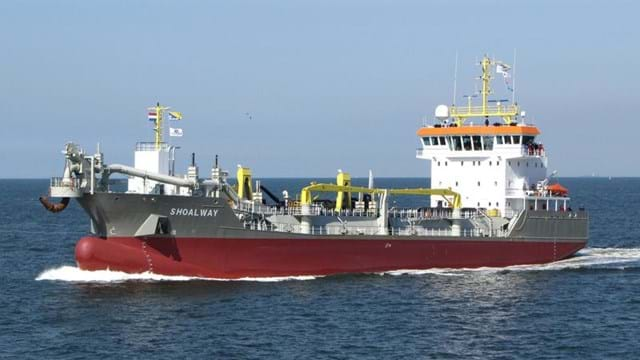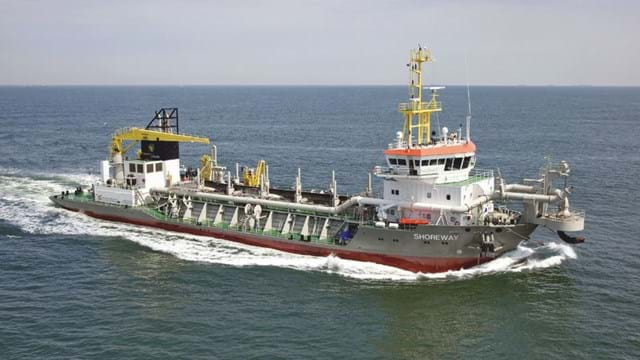The Dangote Group, owned by Aliko Dangote, is building Africa’s largest oil refinery and fertilizer plant in Lekki, 60 kilometers east of Lagos, Nigeria. To facilitate the import of out-of-gauge components and other materials required for construction activities, a port was constructed
In October 2017, Boskalis was awarded the contract for the dredging of an access channel, a turning circle and a port basin. In addition, Boskalis carried out work to reclaim an innovative sandbar, constructed the sandbar groin and north groin, as well as lee-side and basin revetments. In anticipation of future erosion of the beach to the east of the port, a geo-tubes sleeping defense system and sand engine were built.
In total, Boskalis dredged and reclaimed approximately five million cubic meters of sand and installed close to 300,000 tons of rock and 1,050 concrete elements (Eko-podes).
DREDGING AND RECLAMATION
For the dredging and reclamation works, Boskalis deployed three of its trailing suction hopper dredgers: Argonaut, Shoalway and Shoreway. Dredging of the harbor basin and turning circle was carried out by the cutter suction dredger Martina, owned and operated by Boskalis’ Nigerian entity Nigerian Westminster Dredging and Marine Limited (NWDM). The reclamation works were supported by the multicats BKM 100 and Nun River, both owned and operated by NWDM. The onshore reclamation spread consisted of four Caterpillar D6 LGP bulldozers, three Caterpillar 966 wheel loaders and two Caterpillar 336 hydraulic excavators. A start was made with the reclamation of the sandbar, which required dredging and reclamation of four million cubic meters of sand. Subsequently, the reclamation of the sand engine was carried out to allow for the installation of the stacked geo-tubes sleeping defense system.


